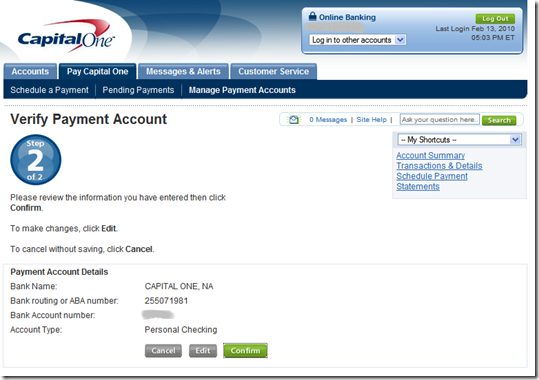 One of the most important trends in the online/mobile world is the so-called real-time Web. Here’s how Wikipedia defines it:
One of the most important trends in the online/mobile world is the so-called real-time Web. Here’s how Wikipedia defines it:
…technologies and practices which enable users to receive information as soon as it’s published, rather than requiring that they check a source periodically for updates.
Online banking should have gone
real-time long ago, but privacy concerns and a legacy of batch
processing — not to mention the 100-year credit crisis — have kept
info delivery in very non-real-time at most financial institutions (note
1).
As balance/transaction email alerts appeared on the scene in 1996/1997, the perfect solution to keep consumers informed on a timely basis seemed assured. But for most users, financial alerts have not lived up to their promise. Why?
1. Users must remember to establish alerts while they are banking online
2. Users must establish proper parameters so they are not overwhelmed with alerts, or receive too little info
3. Those parameters must be tweaked as necessary
4. Users must select the proper email inbox(es) for the alerts
5. Users must read the alerts in a timely fashion
6. And of course, act on them if necessary
Frankly, that’s just too much work for most online bankers. Sending alerts to a mobile device may help since it is typically more immediate than email. But that depends on the user and whether they really want banking messages in their text-message stream.
But we think many users, now accustomed to viewing a stream of info all day from Facebook, Twitter, FriendFeed, RSS, and so on, will want similar delivery of financial info. Some will want their financial info to stream into their overall news feed (e.g., via Facebook, Twitter, etc.), others will prefer a separate dedicated channel (e.g., Blippy note 2, Strings). And the old-school folk will still prefer email or text-message feeds.
Once the feed is established, users will want to interact with the data, for example:
- Tagging entries for budgeting/tax purposes
- Sharing specific transactions with friends, spouses, accountants
- Forwarding transactions to bookkeeping or managers for reimbursement
- Replying to the bank/merchant regarding incorrect transactions
- Flagging transactions for later review
The real-time Web turns online banking on its head. Creating a daily dialogue with customers, rather than one-time sessions where users log in every few days, then hope nothing goes wrong before their next login.
There are advantages in both models, but it’s not really your choice which one to offer. The world has gone real-time: You can either join in or have your customers migrate to Mint/Blippy/Wesabe to tap their financial feed.
Notes:
1. This is characterization of the U.S. situation; many other countries are much further ahead, and have been operating under real-time info-flow for years.
2. We believe there are a number of practical applications for Blippy’s technology; see our previous post.
3. For more info on financial messaging and alerts, Online Banking Report subscribers should review our 2003 report on the subject.
 Eric Mattson is CEO of Online Financial Innovations, the parent company of NetBanker, Online Banking Report and the Finovate Conference Series. He can be reached at [email protected].
Eric Mattson is CEO of Online Financial Innovations, the parent company of NetBanker, Online Banking Report and the Finovate Conference Series. He can be reached at [email protected]. 
























